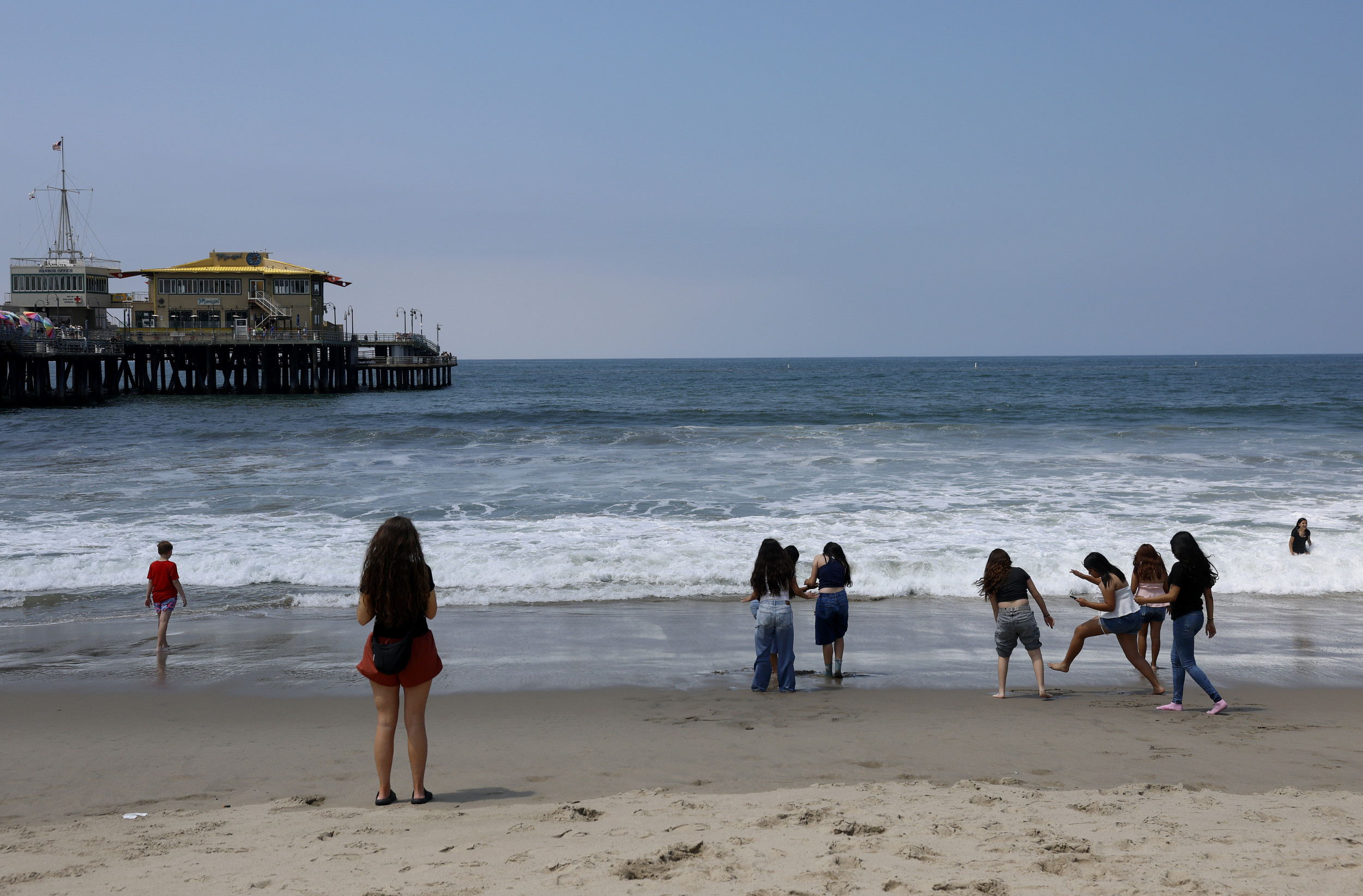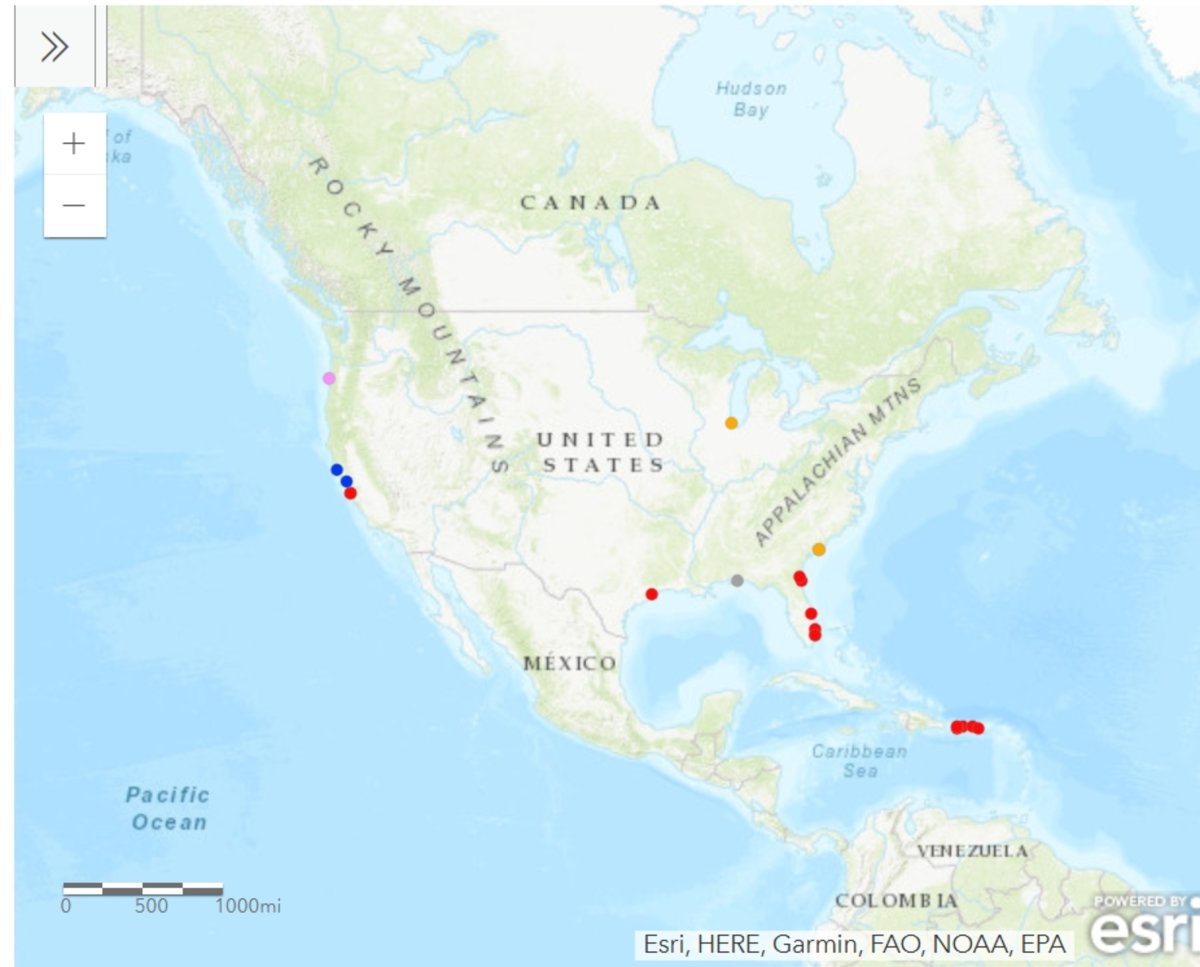
Officials from the National Weather Service (NWS) issued urgent warnings across multiple regions of California on Monday, cautioning the public to avoid entering the ocean due to hazardous sea and surf conditions.
A series of gale and storm warnings, as well as beach hazard statements, have affected large stretches of The Golden State’s coastline, from the North Coast near the Oregon border down through the greater Los Angeles and San Diego areas. For the Los Angeles area, NWS meteorologist Bryan Lewis told Newsweek that an ocean swell could enhance beach dangers through the rest of the week.
Why It Matters
The warnings come during a period of intensified wind and wave activity along the Pacific coast, heightening the risk of drowning, boats capsizing and dangerous rip currents. These hazardous conditions pose significant threats to mariners, swimmers, surfers, and beachgoers, prompting officials to issue statements stressing the importance of staying out of the water and off coastal rocks.
Justin Sullivan/Getty
What To Know
The NWS office in Eureka continued a Gale Warning and issued a Hazardous Seas Warning for areas from Point St. George to Cape Mendocino, covering up to 10 nautical miles offshore. The warning detailed north winds of 20 to 30 knots, which equals 23 to 34 miles per hour, with gusts reaching 40 knots or 46 mph and seas reaching up to 20 feet.
Mariners in these regions were cautioned to secure their vessels, seek safe harbor, or remain in port to avoid capsizing or damage to watercraft.
The gale warning was set to expire at 9 a.m. local time on Monday, but hazardous seas of 12 to 17 feet were forecast to persist through 3 a.m. local time on Wednesday.
The NWS San Francisco Bay Area office reported that, while winds were diminishing, rough seas with significant wave heights up to 20 feet persisted off the far northern outer coastal waters, with up to 15 feet reported in the southern outer areas. These hazardous marine conditions were forecast to continue, with wave heights expected to remain elevated between 10 and 16 feet through mid-to-late week, according to the official coastal waters forecast.
In Southern California, a Beach Hazards Statement remained in effect through Tuesday afternoon for Ventura County Beaches, the Malibu Coast, Los Angeles County Beaches, San Diego County Coastal Areas, and Orange County Coastal Areas. The NWS warned of a long-period south swell generating surf heights up to 6 feet for south and southwest-facing beaches, with strong rip currents expected to endanger swimmers and surfers.
Lifeguards and coastal authorities stressed that waves could wash people off beaches and rocks, capsize small boats nearshore, and create life-threatening conditions for anyone venturing into the water or onto coastal jetties.
There have been 26 fatalities tracked by the National Oceanic and Atmospheric Administration (NOAA) that were attributed to deadly hazards like rip currents and sneaker waves so far this year, four of which occurred at California beaches.
A 39-year-old man and an 8-year-old boy drowned at Cowell Ranch State Beach on January 19 after getting caught in a rip current. Two men died, a 43-year-old at Gerstle Cove on March 3 and a man in his 70s at Rodeo Beach on March 25.
Authorities across the affected regions have issued consistent guidance. Remain out of the water, avoid jetties and rocks, and pay close attention to local warnings and lifeguard advice. Mariners were strongly encouraged to avoid hazardous areas and delay trips until conditions improve.

NOAA
What People Are Saying
NWS meteorologist Bryan Lewis told Newsweek: “Often times, storms in the southern hemisphere will send long-period swells to us from the south. Through the rest of the week, we are going to have some sort of swell. It basically can build energy and create breaking waves, which typically correlates to stronger rip current activity.”
NWS Los Angeles posted on X, formerly Twitter, on Sunday: “If headed to the beach through Tuesday, be prepared. A long period south swell will continue to bring elevated surf (3 to 6 feet) to south-facing beaches as well as an increased risk of significant and dangerous rip currents. Only swim at beaches with lifeguards.”
A rip current survivor story posted on the NOAA website: “A few years ago, my daughter and I were on a floating raft and all of a sudden we were being pulled out to sea. I tried swimming parallel to the shore (while my daughter was on the raft) and just kept getting pulled more out to sea. We weren’t panicking but I was getting pretty tired pulling a raft while swimming. Finally a life guard must have seen us and within a few moments, was out to us and not even 5 minutes later we were back on shore. I just remember thinking, man, I’m swimming parallel and it’s not working.”
What Happens Next?
Strong winds and high surf conditions are forecast to continue across much of the California coast into Wednesday, with ongoing updates expected from the NWS. Officials urged the public to monitor local advisories as marine and beach hazards persist.
